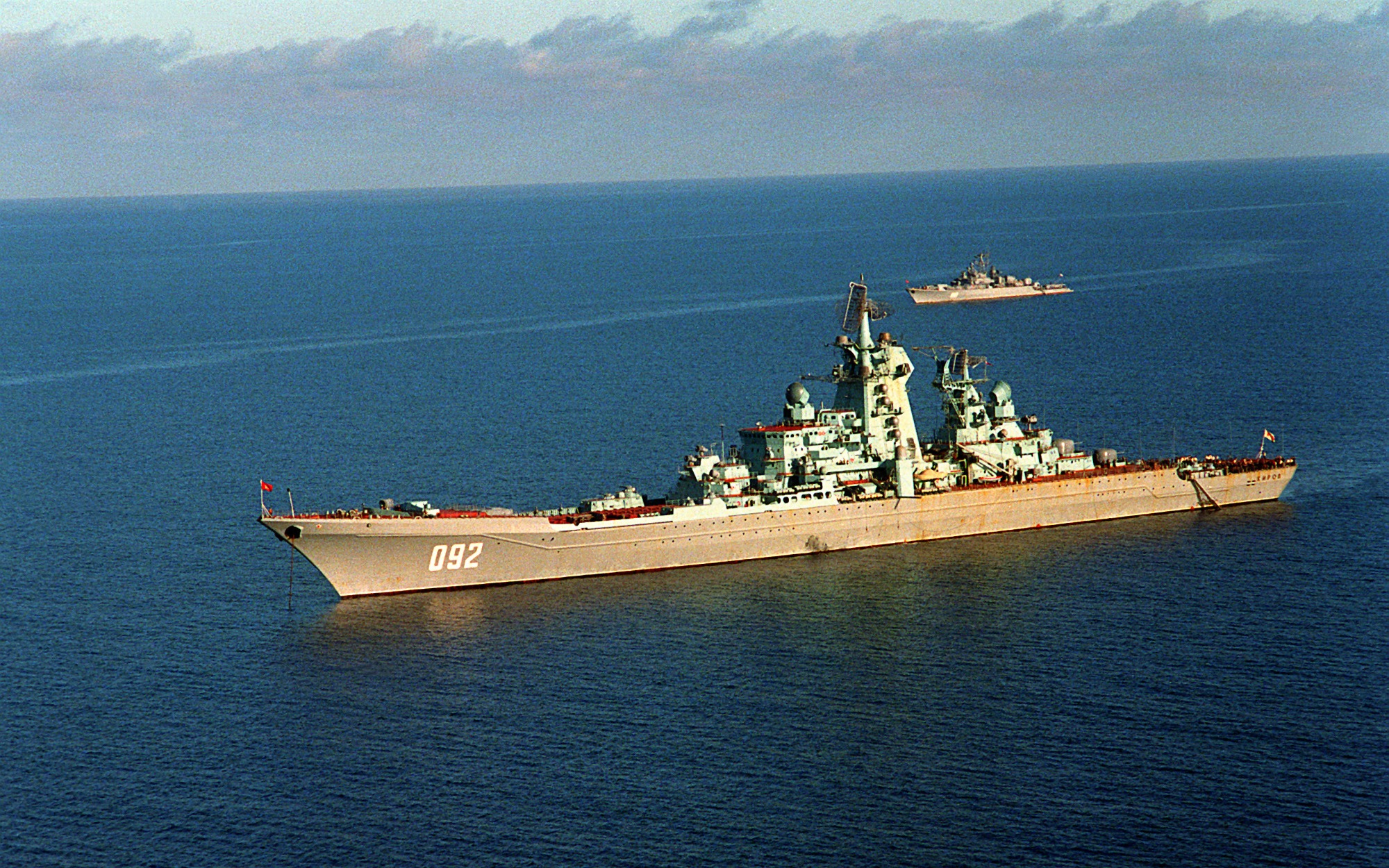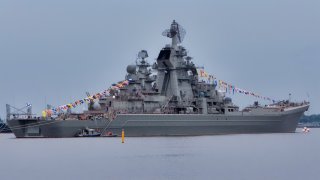Russia's Last Kirov-Class Battlecruiser Can Be Explained in 1 Word
Russia's Admiral Nakhimov, a Kirov-class nuclear-powered battlecruiser, may soon return to service, reflecting Moscow's push to bolster its naval presence amidst the Ukraine war. Though its nuclear reactors are inactive, auxiliary engines will allow the warship to rejoin the fleet.
What You Need to Know: Russia's Admiral Nakhimov, a Kirov-class nuclear-powered battlecruiser, may soon return to service, reflecting Moscow's push to bolster its naval presence amidst the Ukraine war. Though its nuclear reactors are inactive, auxiliary engines will allow the warship to rejoin the fleet.

-Amid heavy Russian naval losses, including the Black Sea Fleet's flagship Moskva, the Admiral Nakhimov could reinforce Russian operations in Crimea and counter NATO-backed Ukrainian missile strikes.
-However, vulnerabilities to Ukraine's innovative drone warfare and lack of significant defensive upgrades could make the battlecruiser a high-value but vulnerable target.
The Kirov-Class Comeback
With American-and-British-made long-range missiles striking inside of Russia from Ukraine, the Russians have vowed retaliation. All throughout the Ukraine War, Moscow has increasingly deployed units into combat that are viewed as antedated.
The T-72 Main Battle Tank, the Su-35 warplane, and now—possibly—the nuclear-powered Kirov-class battlecruiser. Word that Moscow may reconstitute its last remaining Kirov-class comes as surprise to many observers, seeing as Russia’s military insisted that the halcyon days when the massive nuclear-powered juggernauts plied the seas were over.
Indeed, the Kirov-class was all but gone. One of the warships remains, however. The Admiral Nakhimov.Earlier this week, the Russian Navy announced designs to put the warship through factory trials, indicating that the beastly warship may yet be making an astonishing, unlikely comeback.
Although, it must be noted that the Admiral Nakhimov will not be using its storied nuclear reactors, since they remain inactive. Instead, the battlecruiser will get underway powered by its auxiliary engines.

What Good is the Kirov-class Today?
One of the reasons that analysts were convinced the Russians were going to retire the Admiral Nakhimov like the other Kirov-class battlecruisers that once populated the Russian Navy’s fleet was because, since 2015, the modernization effort of the warship had mostly failed.
For almost a decade, the Russians missed multiple, important deadlines during the Admiral Nakhimov’s modernization push. At some point, it was assumed, that Russia would essentially cut its losses.
But the symbolism—and need—of the Russian fleet to deploy a ship like the Admiral Nakhimov has never been stronger. The Russians are winning their bloody of attrition against Ukraine. Despite this, the Ukrainians, with the help of NATO, are exacting heavy prices from the Russians in terms of personnel and vital equipment.
One of the biggest losses, if you can believe it (considering this a predominantly ground war), has been the Russian Black Sea Fleet. For centuries, Moscow has viewed its Black Sea Fleet as a critical component of its (limited) maritime power projection capabilities.
So, the Russians need to ensure that this fleet is always well stocked and ready for action. With the loss of the Black Sea Fleet’s flagship, the Moskva, to Ukrainian drone attacks earlier in the war, the Russians want to reinforce their position in Crimea at their Black Sea Fleet headquarters in Sevastopol.
In the aftermath of the Ukrainian strikes into Russian territory with US-built ATACMS and British-built Storm Shadow Missiles, Moscow ordered the deployment of an astonishing 24 warships—with at least five of these warships equipped with Kalibir cruise missiles.

Overcoming Ukrainian Unconventional Drone Threats
That’s a sizable flotilla with significant firepower that will be used against the Ukrainians for blasting Russian territory with US and British long-range missiles (already, the Russians made history by launching a non-nuclear intercontinental ballistic missile, or ICBM, into Ukrainian territory in response to the Ukrainian strikes).
Adding the massive Admiral Nakhimov to this roster, if the war continues well into next year (it likely will), will be yet another decisive advantage for the Russians.
There are, naturally, caveats to these developments. Russia must recognize that the Ukrainians have pioneered the art of unconventional drone warfare. They have already demonstrated an ability to penetrate Russian-controlled Crimean airspace with those drones and doing significant damage to Ukrainian surface warships.
The Admiral Nakhimov might prove to be too tempting of a target to pass up. That is, unless Moscow installs significant defenses onboard the battlecruiser as well turns the battlecruiser into basically a giant cruise missile—and possibly hypersonic missile—truck.
Without these modifications, the antique Kirov-class battlecruiser might get in the way more than help. That’d be a huge plus for the Ukrainians but not so great for the Russians, who very much want to decisively end the war sooner-rather-than-later.
About the Author
Brandon J. Weichert, a National Interest national security analyst, is a former Congressional staffer and geopolitical analyst who is a contributor at The Washington Times, the Asia Times, and The-Pipeline. He is the author of Winning Space: How America Remains a Superpower, Biohacked: China’s Race to Control Life, and The Shadow War: Iran’s Quest for Supremacy. His next book, A Disaster of Our Own Making: How the West Lost Ukraine, is available for purchase wherever books are sold. Weichert can be followed via Twitter @WeTheBrandon.
Image Credit: Creative Commons.


